The once richest city in the world
Potosí and Sucre were not in our route south towards Uyuni, so we decided to leave the bikes in Oruro and take a bus to visit them. Potosí is mostly known because of the Cerro Rico, the richest silver mine in the world. It was exploited by the Spaniards for centuries, and used to finance the Spanish empire during its heyday.
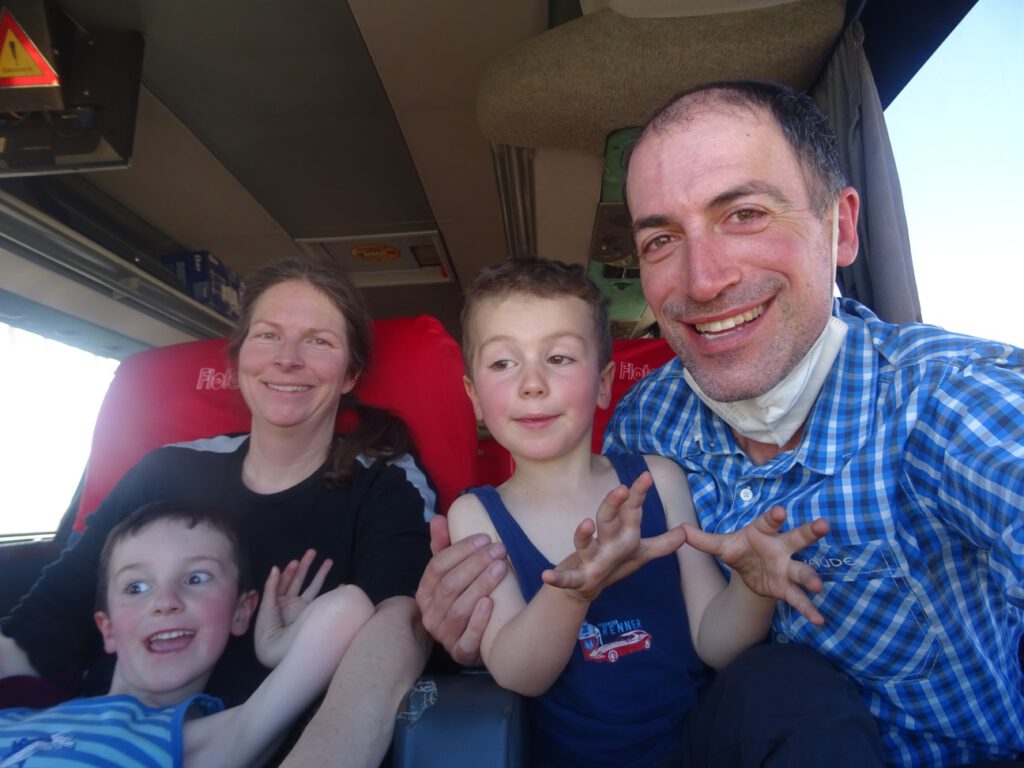
The silver was transported to Europe in ships, which would be regularly attacked by English pirates, or exchanged with German or Dutch merchants to obtain weapons or technology, which means there is now Bolivian silver all over the world. Even now, in Spanish, when something is very valuable, it is said “it is worth a Potosí”.
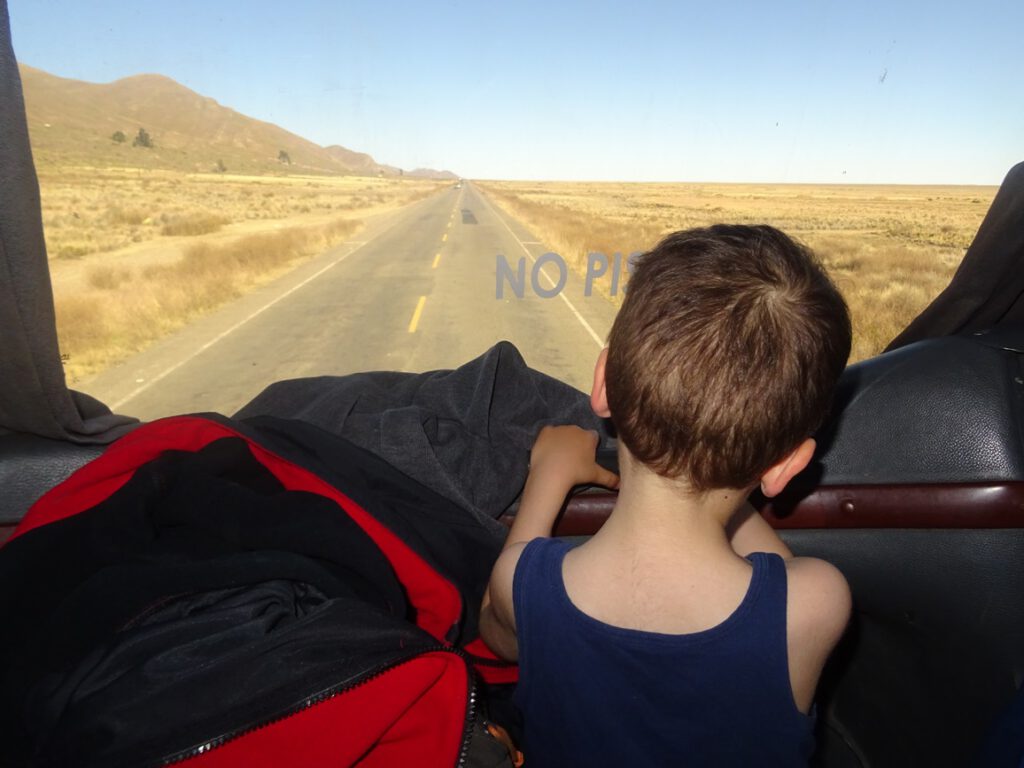
The trip there follows the road south to Uyuni, but then turns east in Challapata. The first part is relatively boring, just flat, but as soon as it turns left it gets very interesting. First it climbs to an even higher plateau, and then there are huge flatlands with hundreds of llamas scattered all over. We had never seen so many of them together!
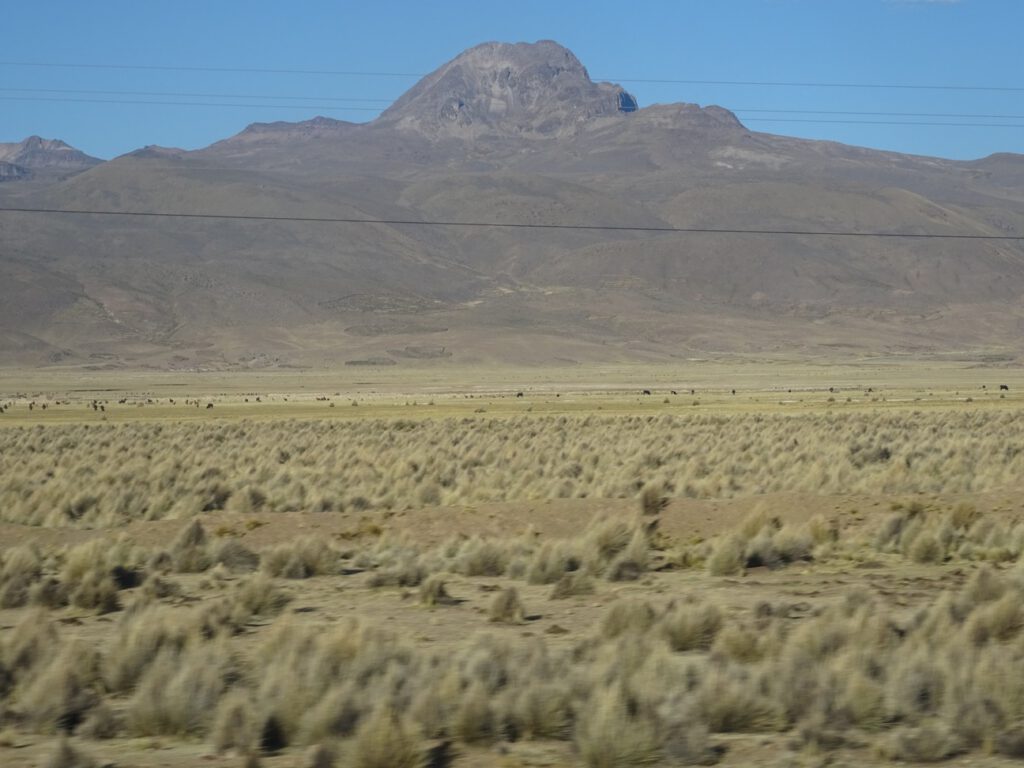
The road then goes downhill towards Potosi, but unfortunately we could not see this part as it was dark already.
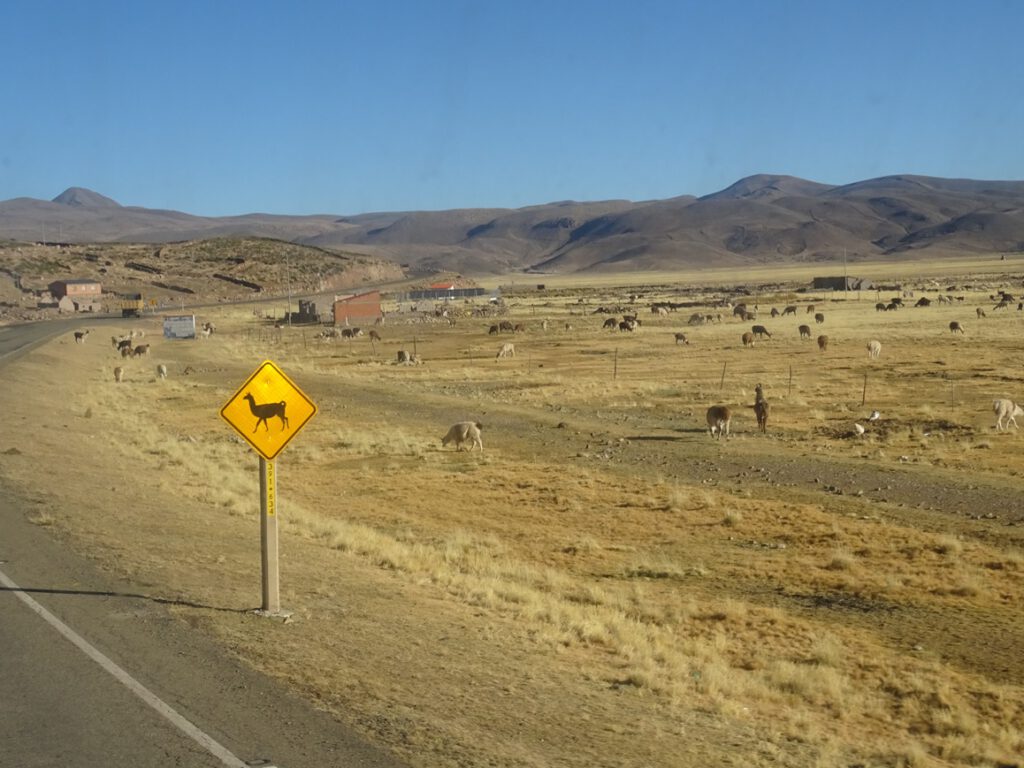
The Cerro Chico is a huge mountain overseeing the city, and you can see it from nearly everywhere. Right now it’s just a barren mountain with no vegetation, only clouds of dust from the trucks going up and down getting the mineral out. But first we went to visit the city centre.
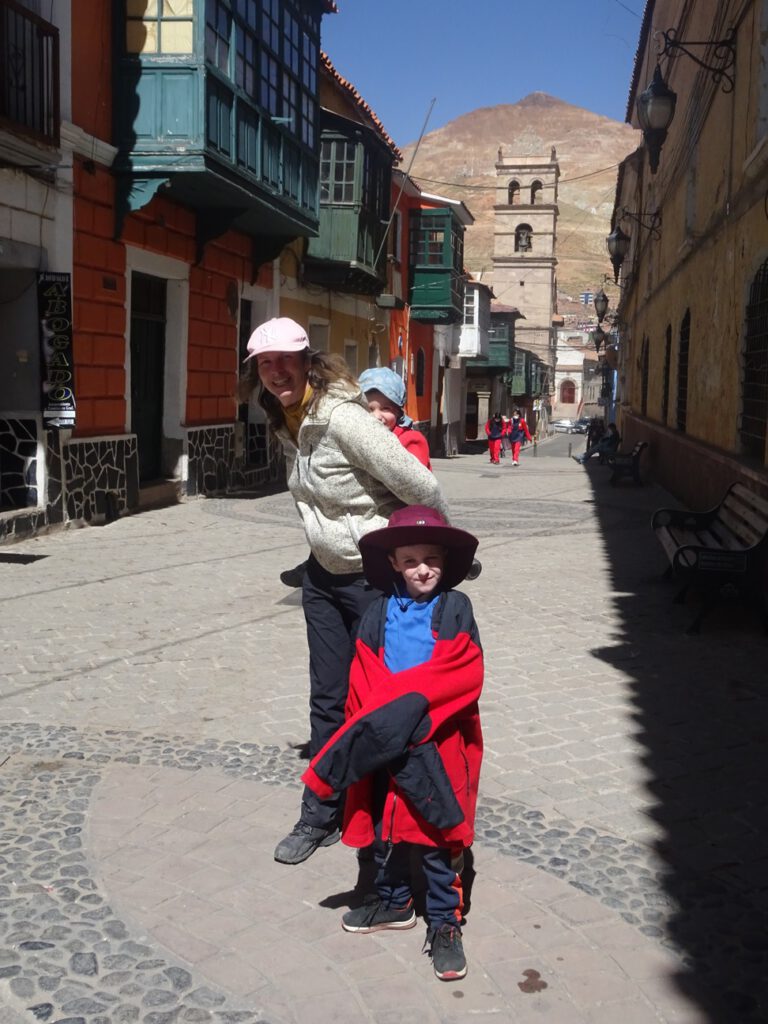
The highlight is the National Mint Museum. At first all silver was exported, but having the mine so close, they started to produce coins there, for the Spanish kingdom but also for many other countries.
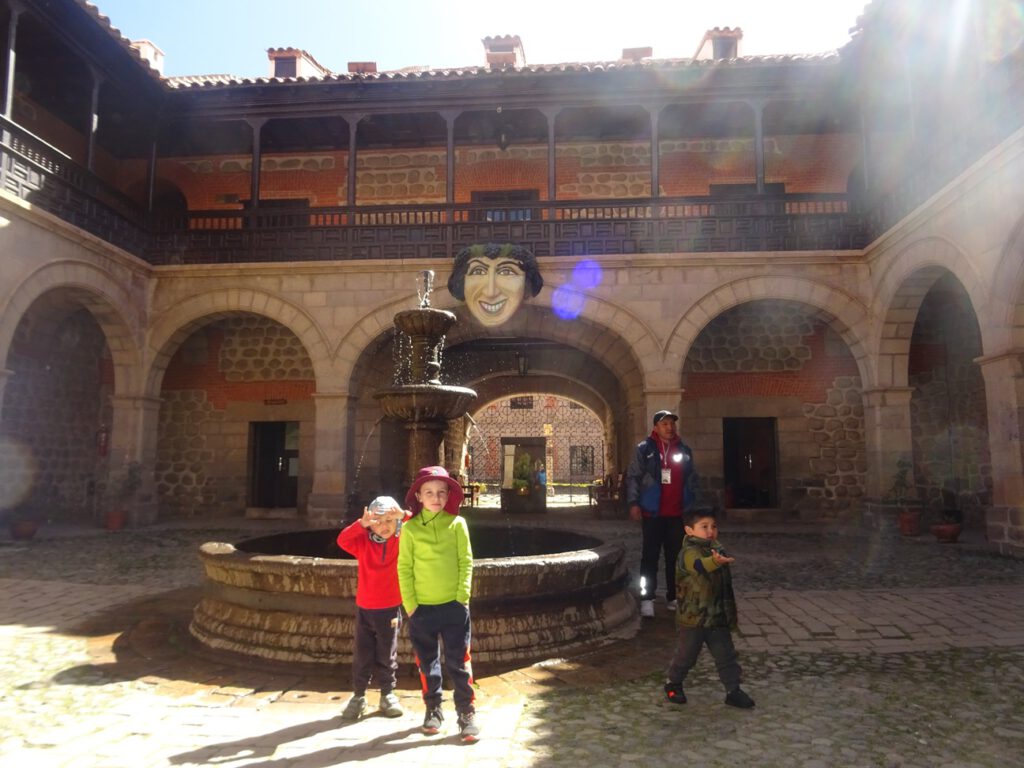
Unfortunately it has not been minting money for nearly 100 years and now it is only a museum. Ironically, Bolivia now does not produce their own coins, but have them made in other countries, like Spain, Canada and Chile.
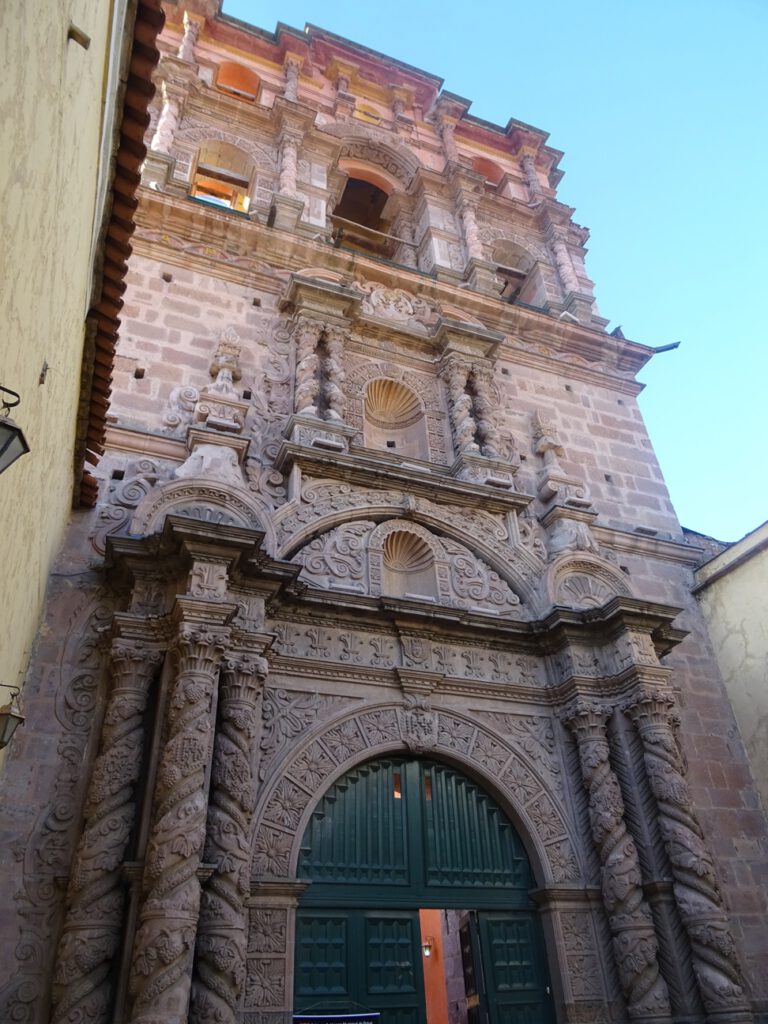
In the Main Square nearby there is a monument to the Charango, a typical Bolivian small guitar, believed to be invented here in Potosí.
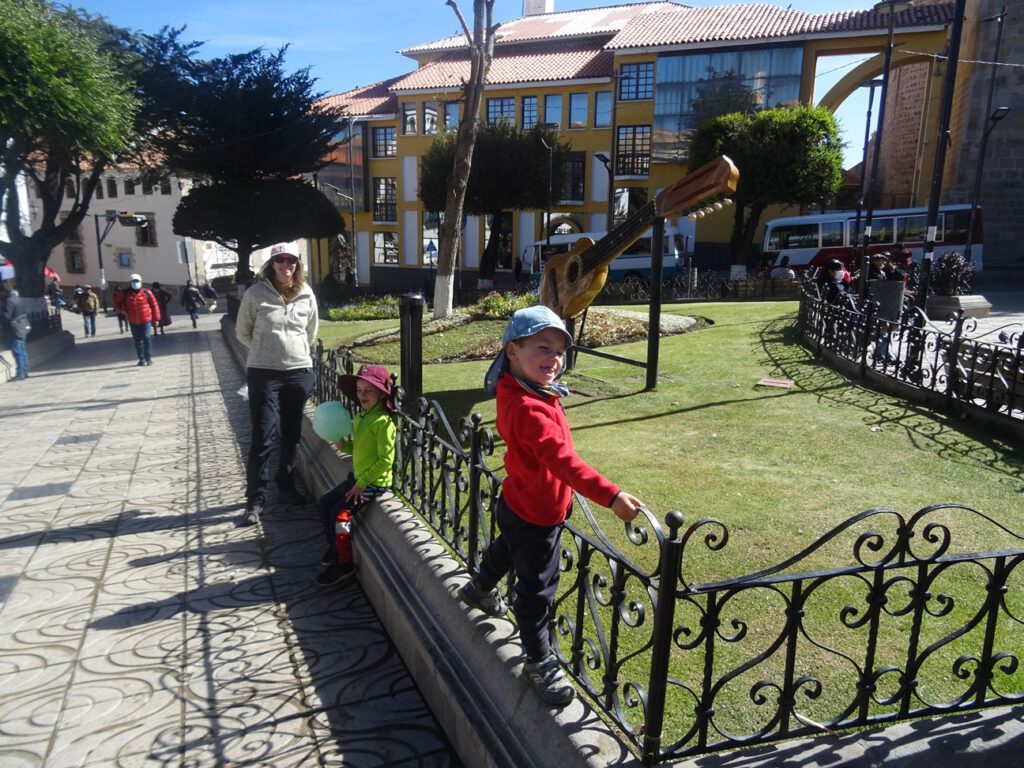
I booked a tour for myself in one of the mines, as it was deemed not suitable for children. Funnily enough, the other guy doing the tour with me was a German guy with a Spanish girlfriend, and his family comes from Darmstadt, the city where we live. What a coincidence!
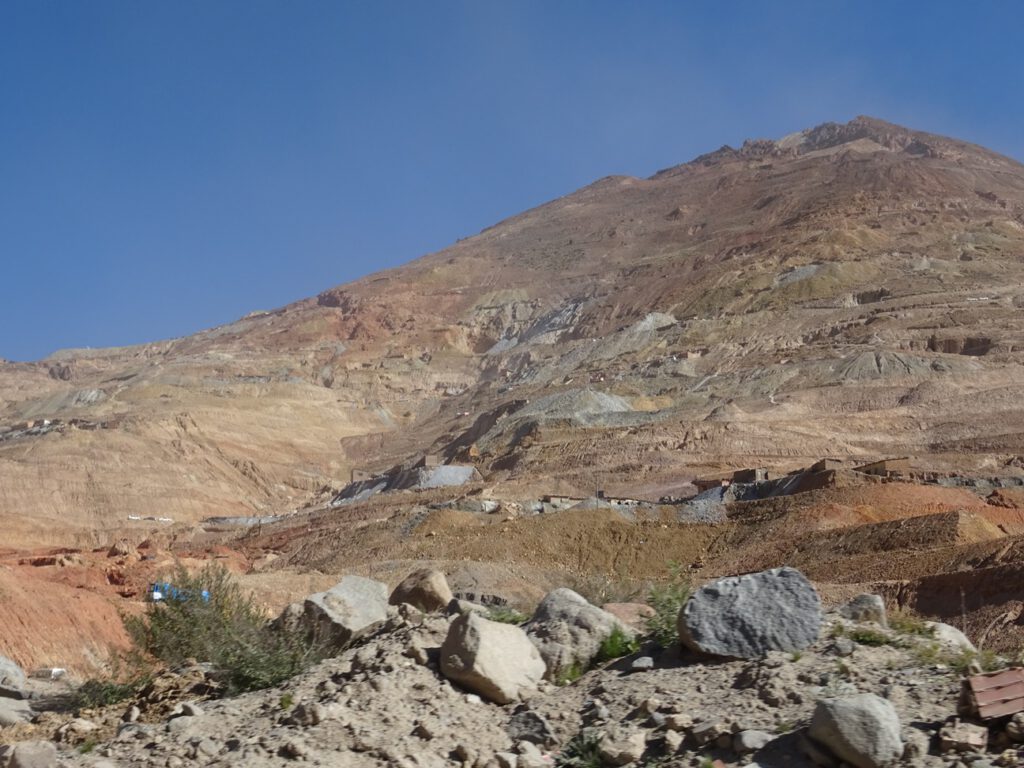
The tour was quite interesting if also scary at times. First we bought some “presents” for the miners, namely coca leaves and juice. We then got into the mine, which was an active one so guys covered in dust were pushing wagons full of mineral every few minutes to the outside.
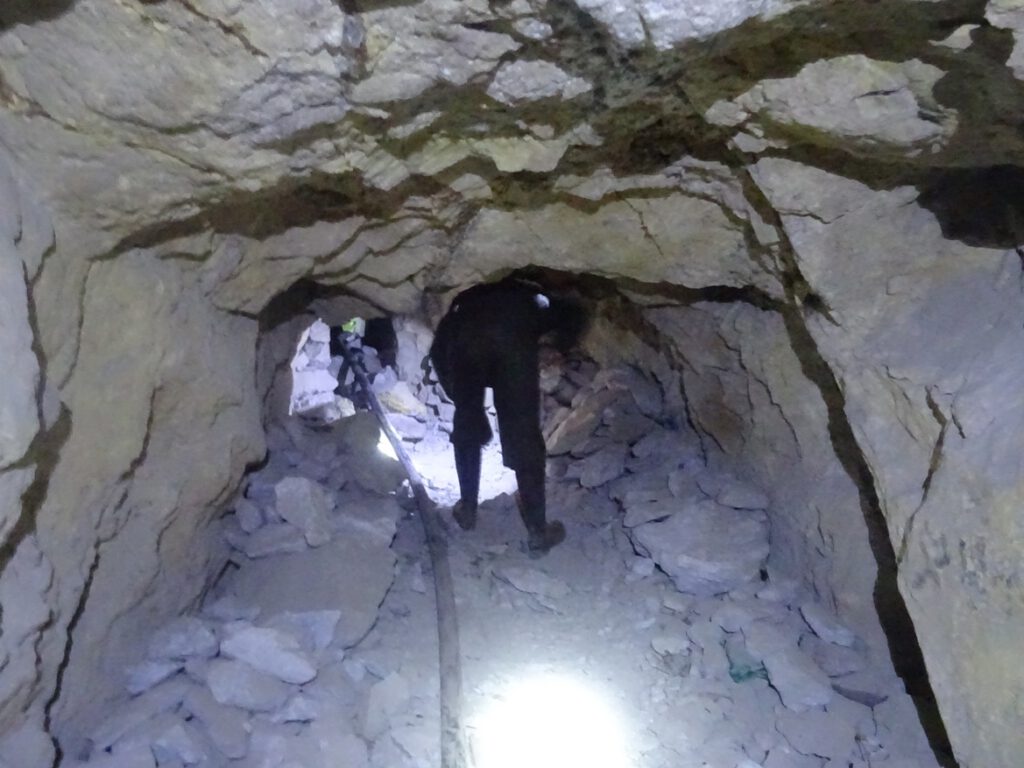
The mine we visited is a cooperative. That means that they pool the costs to get health insurance or materials, but each of them will be paid individually, depending on the hours they work and the richness of the rocks they extracted. That is why there are dozens of labs in Potosí that offer to check the contents of your extraction. The problem for those guys is that the mineral gets exported as it is, with no refinement, so they are very exposed to fluctuations in price in the wholesale market. Most of them are very young and with very little financial education, so most just burn their earnings instead of saving for a better future.
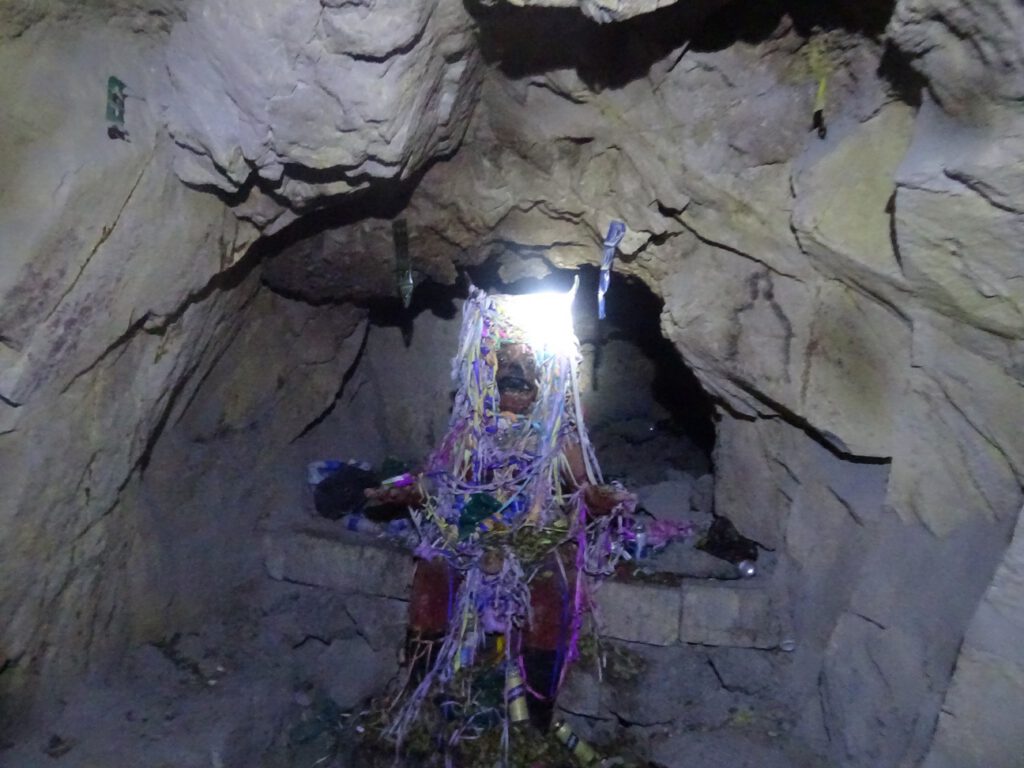
We met some of them inside the mine, and since it was Friday, they were celebrating the weekend by drinking “double A”, which means Alcohol+Agua. The alcohol can be bought anywhere, has a 96% richness and it’s obtained from sugar cane. The water is just to dilute it a bit. Hence our present of fruit juice, so at least they get some flavor while getting drunk. We drank with them, all sharing from the same shot glass. At least I hope the alcohol helped to keep viruses at bay.
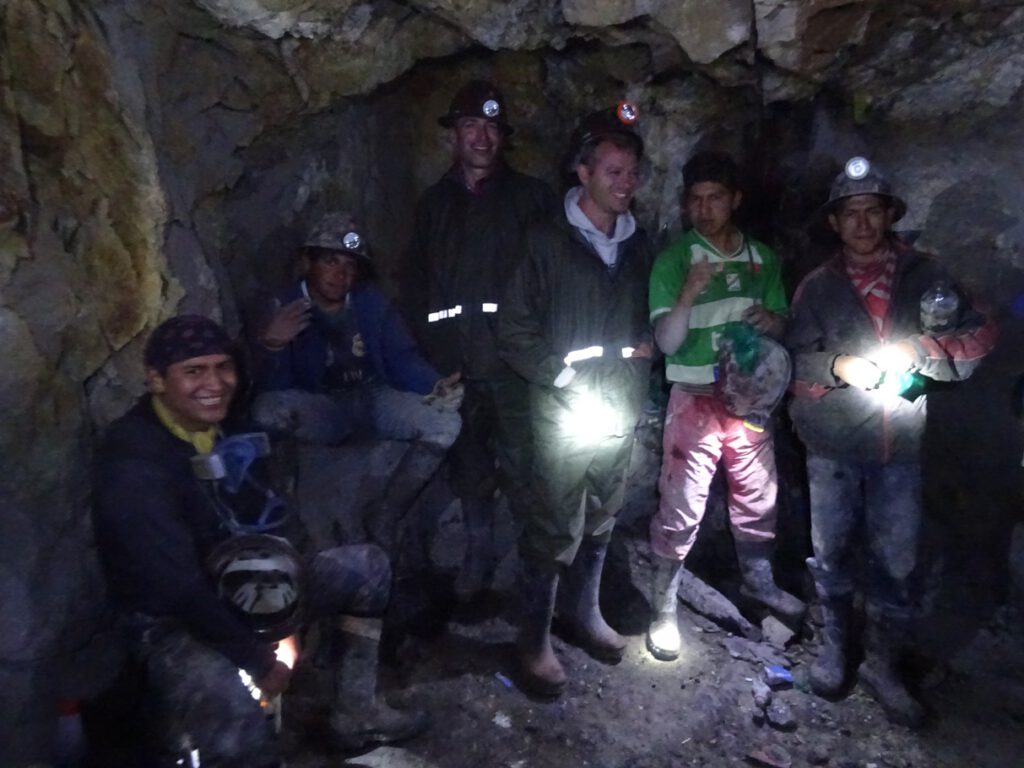
We then got to see the “Tio de la Mina”, some kind of “god” that miners believe protect them in the mine. They look like the devil and are built out of clay from the mine and receive all kinds of presents in exchange of favors, but mostly alcohol and cigarettes. The origin comes from the Spanish times, when only the locals would get into the mines to work. The Spanish, from the outside, were afraid their slaves were not working hard enough, so they invented this superstitious figure to watch on them. But in the end it worked the other way, and miners took it as their protector.
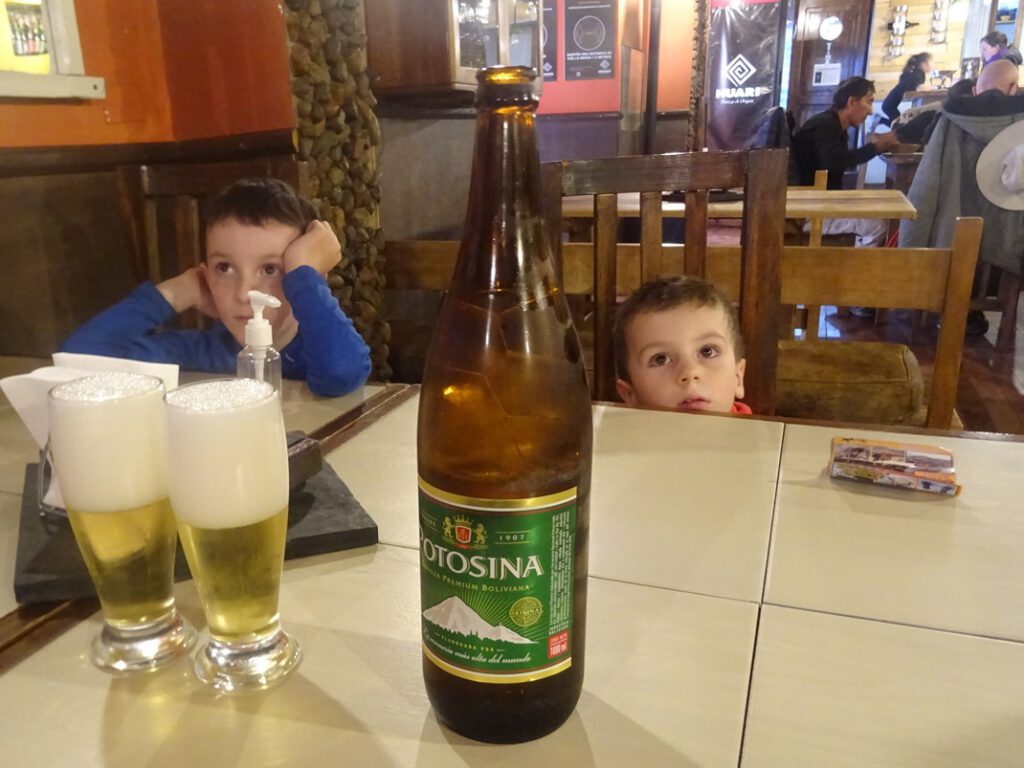
Our next stop now will be Sucre, the official capital of Bolivia and only 3 hours away.
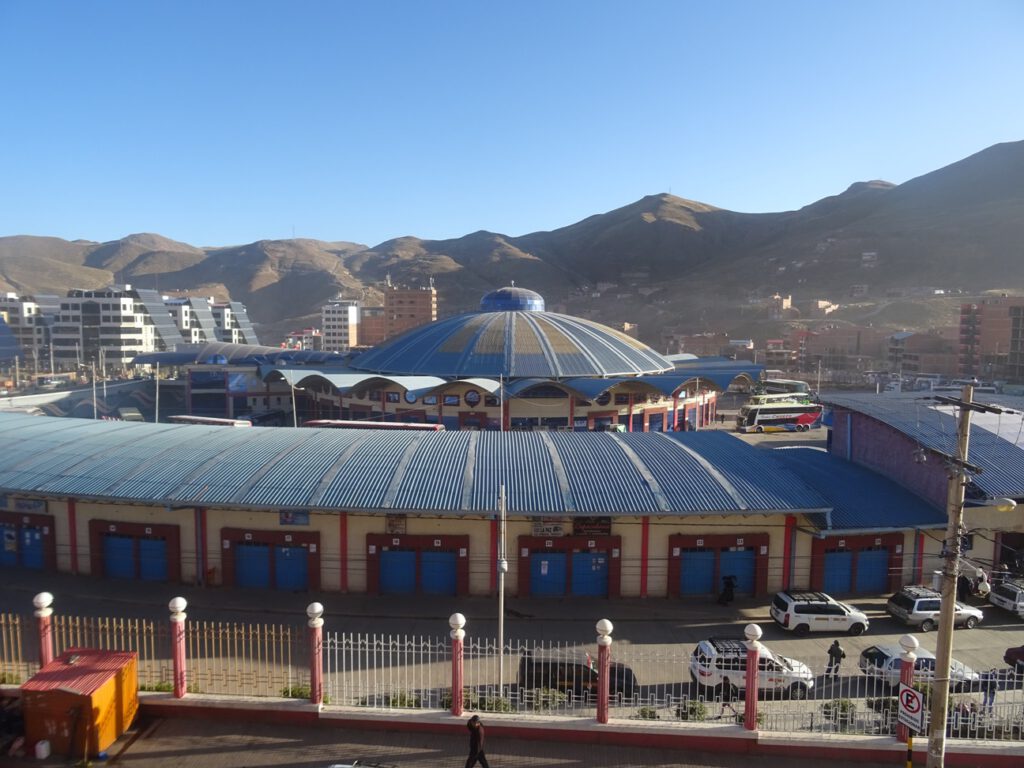
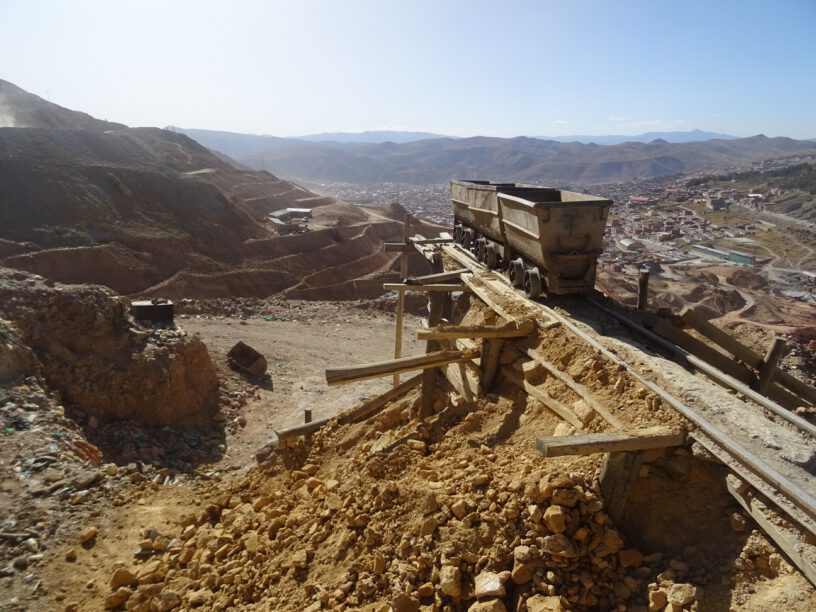
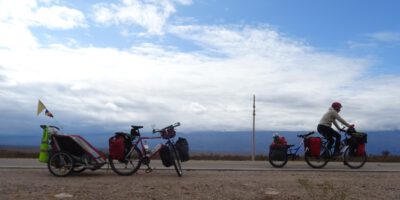
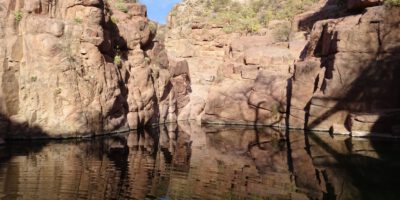
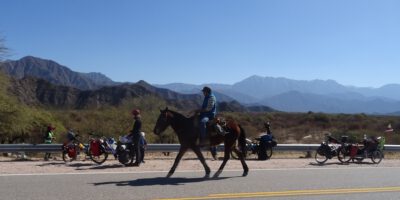
Maria
madre la cueva esa jaja, que miedito
Jose
Bueno, después de un rato se pasa. Pero ya muchos expertos dicen que como venga otro terremoto, y ahí hay muchos, igual se viene la montana entera abajo, y se lleva la ciudad por delante.
katherine
Que cambio de clima, raro verlos tan descubiertos :). Me encanta la senal vial.. clarisimo me quedo. Y siii. me lo pensaria dos veces antes de entrar a la mina. Aunque me pregunto, la mina vas avanzando de manera horizontal o van hacia abajo?
Jose
La mina era en su mayoria horizontal. Yo creo que lo hacen así para que sea más facil sacar las vagonetas, pues el trabajo es todo manual
Ricardo González García
Muy conocida para los aficionados a la numismática la “ceca Potosí”, preciosas monedas de plata y oro acuñaron en esa ciudad varios reyes españoles.